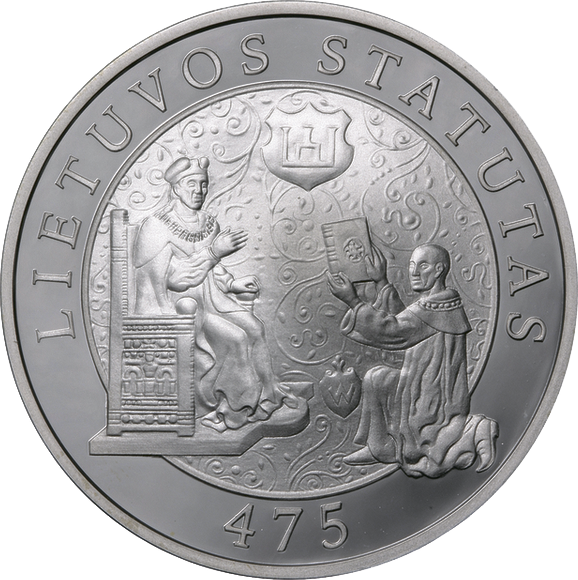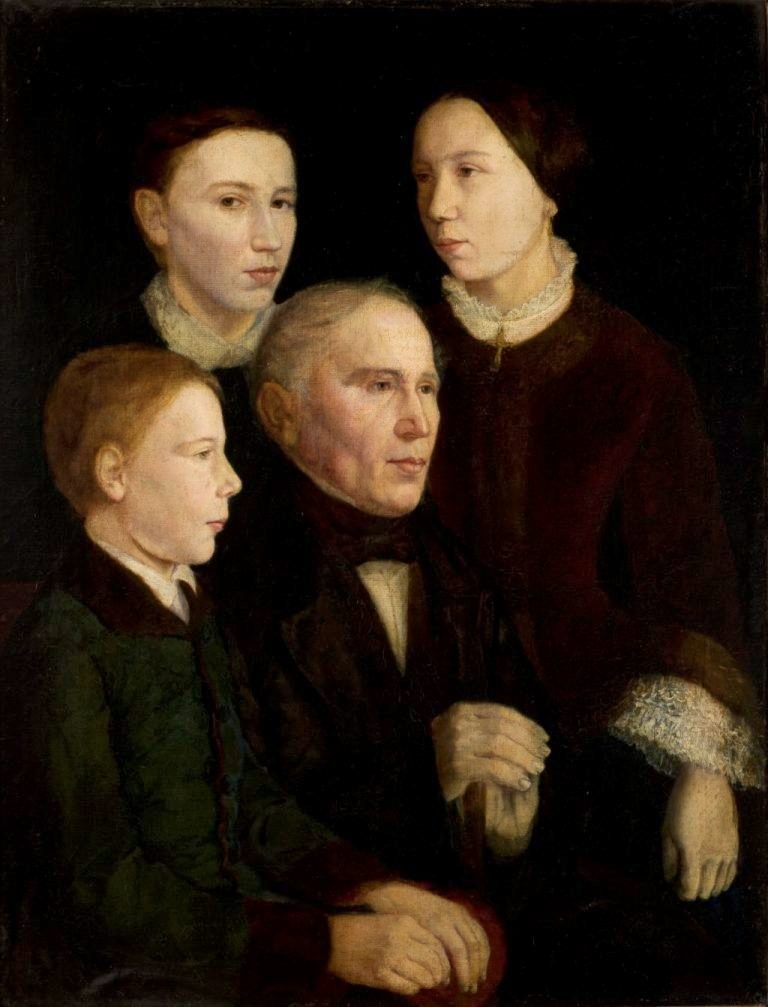|
Albertas Goštautas
Albertas Goštautas ( la, Albertus Gastold, links=no, pl, Olbracht Gasztołd, links=no, Belarusian/Ukrainian: ''Альберт Гаштольд'') ( – 1539) was a Lithuanian noble of the Goštautai family from ethnic Lithuanian lands of the Grand Duchy of Lithuania. Voivode of Navahrudak since 1508, Voivode of Polotsk since 1514, Voivode of Trakai since 1519 and Voivode of Vilnius since 1522. In 1522 he became Grand Chancellor of Lithuania. He was the initiator and the editor of the First Statute of Lithuania, as a successor of his staunch opponent Mikolaj Radziwiłł, who rivaled him in the precedence in the Council of Lords. His subsequent rival in influence in the Grand Duchy was Konstanty Ostrogski. Albertas was a son of Martynas Goštautas and father of Stanislovas Goštautas, last male heir of the Goštautai family. He was buried in Vilnius Cathedral, where his tomb remains till present day. He built the Hieraniony Castle (ruins survive in present-day Belarus). It ... [...More Info...] [...Related Items...] OR: [Wikipedia] [Google] [Baidu] |
Grand Chancellor Of Lithuania
Chancellor of Poland ( pl, Kanclerz - , from la, cancellarius) was one of the highest officials in the historic Poland. This office functioned from the early Polish kingdom of the 12th century until the end of the Polish–Lithuanian Commonwealth in 1795. A respective office also existed in the Grand Duchy of Lithuania since the 16th century. Today the office of the chancellor has been replaced by that of the Prime Minister. Chancellors' powers rose together with the increasing importance of written documents. In the 14th century the office of Chancellor of Kraków ( pl, Kanclerz krakowski) evolved into the Chancellor of the Crown ( pl, Kanclerz koronny) and from that period the chancellor powers were greatly increased, as they became responsible for the foreign policy of the entire Kingdom (later, the Commonwealth). The Chancellor was also supposed to ensure the legality of monarch's actions, especially whether or not they could be considered illegal in the context of pacta co ... [...More Info...] [...Related Items...] OR: [Wikipedia] [Google] [Baidu] |
Vilnius Cathedral
The Cathedral Basilica of St Stanislaus and St Ladislaus of Vilnius ( lt, Vilniaus Šv. Stanislovo ir Šv. Vladislovo arkikatedra bazilika; pl, Bazylika archikatedralna św. Stanisława Biskupa i św. Władysława, historical: ''Kościół Katedralny św. Stanisława'') is the main Roman Catholic Cathedral of Lithuania. It is situated in Vilnius Old Town, just off Cathedral Square. Dedicated to Saints Stanislaus and Ladislaus, the church is the heart of Catholic spiritual life in Lithuania. The coronations of the Grand Dukes of Lithuania took place within its confines. Inside its crypts and catacombs are buried many famous people from Lithuanian and Polish history including Vytautas (1430), his wife Anna (1418), his brother Sigismund (Žygimantas) (1440), his cousin Švitrigaila (1452), Saint Casimir (1484), Alexander Jagiellon (1506), and two wives of Sigismund II Augustus: Elisabeth of Habsburg (1545) and Barbara Radziwiłł (1551). The heart of the Polish king and Grand ... [...More Info...] [...Related Items...] OR: [Wikipedia] [Google] [Baidu] |
1480s Births
148 may refer to: * 148 (number), a natural number *AD 148, a year in the 2nd century AD * 148 BC, a year in the 2nd century BC * 148 (album), an album by C418 Daniel Rosenfeld (born 9 May 1989), better known by his stage/online name C418 (pronounced "see four eighteen"), is a German musician, producer and sound engineer, best known as the composer and sound designer for the sandbox video game ''Minec ... * 148 (Meiktila) Battery Royal Artillery * 148 (New Jersey bus) See also * List of highways numbered 148 * {{Number disambiguation ... [...More Info...] [...Related Items...] OR: [Wikipedia] [Google] [Baidu] |
Prussian Homage (painting)
The ''Prussian Homage'' ( pl, Hołd pruski) is an oil on canvas painting by Polish painter Jan Matejko painted between 1879 and 1882 in Kraków (then part of Austria-Hungary). The painting depicts the "Prussian Homage," a significant political event from the time of the Renaissance in Poland in which Albrecht of Hohenzollern, the Duke of Prussia paid tribute and swore allegiance to King Sigismund I the Old in Kraków's market square on 10 April 1525. Matejko depicted over thirty important figures of the Polish Renaissance period, taking the liberty of including several who were not actually present at the event. The painting glorifies this event in Poland's past and its culture, and the majesty of its kings. At the same time, the painting has darker undertones, reflecting the troubled times that befell Poland in the late eighteenth century, for the Kingdom of Prussia would become one of the partitioning powers that ended the independence of Poland. The painting was seen by ... [...More Info...] [...Related Items...] OR: [Wikipedia] [Google] [Baidu] |
Jan Matejko
Jan Alojzy Matejko (; also known as Jan Mateyko; 24 June 1838 – 1 November 1893) was a Poles, Polish painting, painter, a leading 19th-century exponent of history painting, known for depicting nodal events from Polish history. His works include large scale oil on canvas, oil paintings such as ''Rejtan (painting), Rejtan'' (1866), ''the Unia lubelska (painting), Union of Lublin'' (1869), '' the Astronomer Copernicus, or Conversations with God'' (1873), or ''the Battle of Grunwald (painting), Battle of Grunwald'' (1878). He was the author of numerous portraits, a gallery of List of Polish monarchs, Polish monarchs in book form, and murals in St. Mary's Basilica, Kraków. He is considered by many as the most celebrated Polish painters, Polish painter, and sometimes as the "national painter" of Poland. Matejko was among the notable people to receive an unsolicited letter from the German philosopher Friedrich Nietzsche, as the latter tipped, in January 1889, into his psychotic break ... [...More Info...] [...Related Items...] OR: [Wikipedia] [Google] [Baidu] |
Ruthenians
Ruthenian and Ruthene are exonyms of Latin origin, formerly used in Eastern and Central Europe as common ethnonyms for East Slavs, particularly during the late medieval and early modern periods. The Latin term Rutheni was used in medieval sources to describe all Eastern Slavs of the Grand Duchy of Lithuania, as an exonym for people of the former Kievan Rus', thus including ancestors of the modern Belarusians, Rusyns and Ukrainians. The use of ''Ruthenian'' and related exonyms continued through the early modern period, developing several distinctive meanings, both in terms of their regional scopes and additional religious connotations (such as affiliation with the Ruthenian Greek Catholic Church). In medieval sources, the Latin term ''Rutheni'' was commonly applied to East Slavs in general, thus encompassing all endonyms and their various forms (Ukrainian: ''русини'', Belarusian: ''русіны''). By opting for the use of exonymic terms, authors who wrote in Latin were ... [...More Info...] [...Related Items...] OR: [Wikipedia] [Google] [Baidu] |
Abraomas Kulvietis
Abraomas Kulvietis ( la, Abraham Culvensis; pl, Abraham Kulwieć; c. 1509 – 19 June 1545) was a Lithuanian Lutheran jurist and a professor at Königsberg Albertina University, as well as a reformer of the church. Kulvietis was born in Kulva, now in the Jonava district of Lithuania, into an old Lithuanian noble family of middle wealth. Between 1528 and 1537 he studied in many universities across Europe. At first in Cracow Academy, later, as he became aware of humanist reforms, he moved to the Catholic University of Leuven, where he studied the works of Desiderius Erasmus. He continued his education in Wittenberg, where he studied Martin Luther's teachings. In 1536 he moved to Leipzig and finally Siena, where in 1537 he was granted the title Doctor of Law. After receiving his title, Kulvietis returned to the Great Duchy of Lithuania, giving lectures in Vilnius and working under the protection of Queen Bona Sforza and King of Poland and Grand Duke Sigismund II Augustus. In 1 ... [...More Info...] [...Related Items...] OR: [Wikipedia] [Google] [Baidu] |
Lithuanian Literature
Lithuanian literature ( lt, lietuvių literatūra) concerns the art of written works created by Lithuanians throughout their history. History Latin language A wealth of Lithuanian literature was written in Latin, the main scholarly language in the Middle Ages. The edicts of the Lithuanian King Mindaugas are the prime example of literature of this kind. The Letters of Gediminas are another crucial heritage of the Lithuanian Latin writings. One of the first Lithuanian authors who wrote in Latin was Nicolaus Hussovianus (about 1480 – after 1533). His poem ''Carmen de statura, feritate ac venatione bisontis'' (''A Song about the Appearance, Savagery and Hunting of the Bison''), published in 1523, describes the Lithuanian landscape, way of life and customs, touches on existing political problems and reflects the clash of paganism and Christianity. Joannes Vislicensis (1485–1520) wrote a poem - monument ''Bellum Prutenum'' (''Prussian war'') dedicated to a Battle of Grunwald ag ... [...More Info...] [...Related Items...] OR: [Wikipedia] [Google] [Baidu] |
Franciscan
The Franciscans are a group of related Mendicant orders, mendicant Christianity, Christian Catholic religious order, religious orders within the Catholic Church. Founded in 1209 by Italian Catholic friar Francis of Assisi, these orders include three independent orders for men (the Order of Friars Minor being the largest contemporary male order), orders for women religious such as the Order of Saint Clare, and the Third Order of Saint Francis open to male and female members. They adhere to the teachings and spiritual disciplines of the founder and of his main associates and followers, such as Clare of Assisi, Anthony of Padua, and Elizabeth of Hungary. Several smaller Franciscan spirituality in Protestantism, Protestant Franciscan orders exist as well, notably in the Anglican and Lutheran traditions (e.g. the Community of Francis and Clare). Francis began preaching around 1207 and traveled to Rome to seek approval from Pope Innocent III in 1209 to form a new religious order. The o ... [...More Info...] [...Related Items...] OR: [Wikipedia] [Google] [Baidu] |
Nationalistic
Nationalism is an idea and movement that holds that the nation should be congruent with the state. As a movement, nationalism tends to promote the interests of a particular nation (as in a group of people), Smith, Anthony. ''Nationalism: Theory, Ideology, History''. Polity, 2010. pp. 9, 25–30; especially with the aim of gaining and maintaining the nation's sovereignty ( self-governance) over its homeland to create a nation-state. Nationalism holds that each nation should govern itself, free from outside interference ( self-determination), that a nation is a natural and ideal basis for a polity, and that the nation is the only rightful source of political power. It further aims to build and maintain a single national identity, based on a combination of shared social characteristics such as culture, ethnicity, geographic location, language, politics (or the government), religion, traditions and belief in a shared singular history, and to promote national unity or solida ... [...More Info...] [...Related Items...] OR: [Wikipedia] [Google] [Baidu] |
Protestant Reformation
The Reformation (alternatively named the Protestant Reformation or the European Reformation) was a major movement within Western Christianity in 16th-century Europe that posed a religious and political challenge to the Catholic Church and in particular to papal authority, arising from what were perceived to be errors, abuses, and discrepancies by the Catholic Church. The Reformation was the start of Protestantism and the split of the Western Church into Protestantism and what is now the Roman Catholic Church. It is also considered to be one of the events that signified the end of the Middle Ages and the beginning of the early modern period in Europe.Davies ''Europe'' pp. 291–293 Prior to Martin Luther, there were many earlier reform movements. Although the Reformation is usually considered to have started with the publication of the '' Ninety-five Theses'' by Martin Luther in 1517, he was not excommunicated by Pope Leo X until January 1521. The Diet of Worms of May 1521 ... [...More Info...] [...Related Items...] OR: [Wikipedia] [Google] [Baidu] |








.jpg)